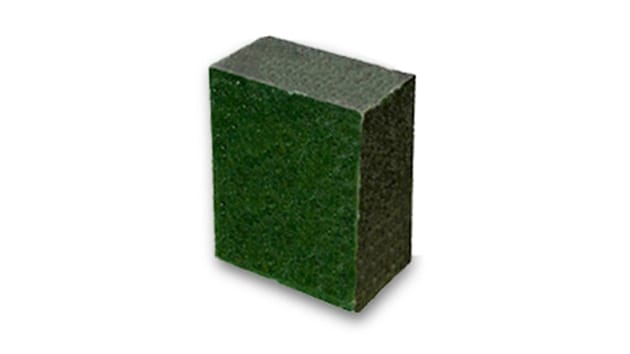Research
and
Development
Research and Development at Mino Ceramics
Utilizing our firing technology and ceramics manufacturing technology,
we are conducting research and development of energy-saving heating and firing furnaces and energy-saving refractories for high-temperature firing furnaces.
We are pursuing new technologies that are unique in the world.
insulation
Heat materials for high temperature applications that contribute to improved energy cosumption efficiency (Porousceramics)
We have been developing porous ceramics using the gelatinization-freezing method.
We are conducting research and development on high-temperature heat insulators that contribute to improving the energy consumption efficiency of firing furnaces.
We are currently developing this material under a project commissioned by the New Energy and Industrial Technology Development Organization (NEDO).
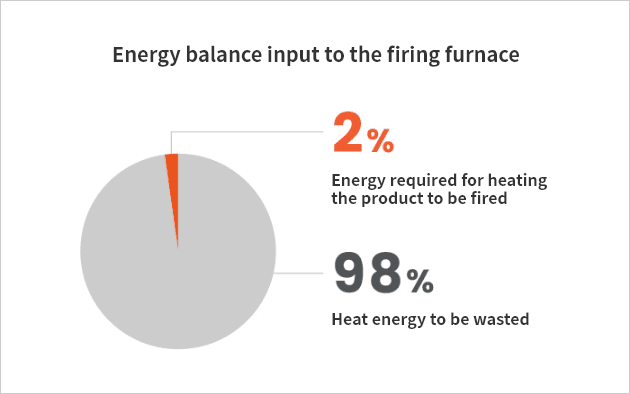
General ceramics firing furnace
(Batch-type furnace, effective volume 2 m3, heating temperature 1650°C, insulation: high-alumina refractory insulation bricks)
General ceramics firing furnace
In a typical batch-type ceramics firing furnace, if the energy input for firing is 100%, only 2% of the energy is used for heating the material. The remaining 98% of the energy is discarded, resulting in low energy consumption efficiency.
Energy Consumption Efficiency of Batch Type Ceramics Firing Furnace
Using High Temperature Insulation Material
In order to improve the energy consumption efficiency of batch-type ceramic kilns, we are conducting research and development on fiberless high-temperature heat insulators. In the case of a firing furnace using the developed high-temperature heat insulator as the furnace material, the amount of fuel required for firing can be significantly reduced compared to a firing furnace using existing heat insulator, which is expected to reduce the running cost and significantly improve the energy consumption efficiency.
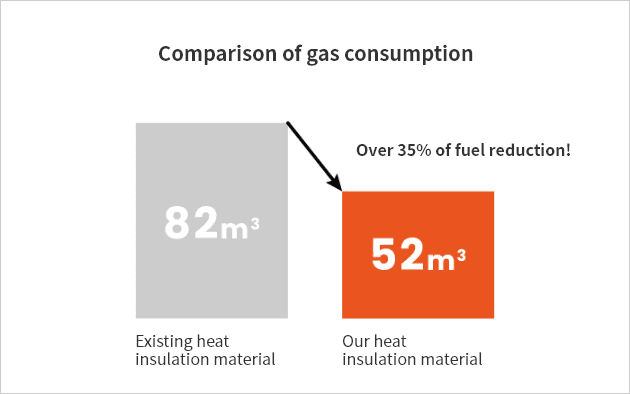
Reduction of fuel consumption in the case where the developed heat insulator is lined in a gas-fired kiln
(Batch-type furnace, effective volume of 0.7m3, heating temperature of 1500℃, existing insulation material: high-alumina fire-resistant insulating bricks)
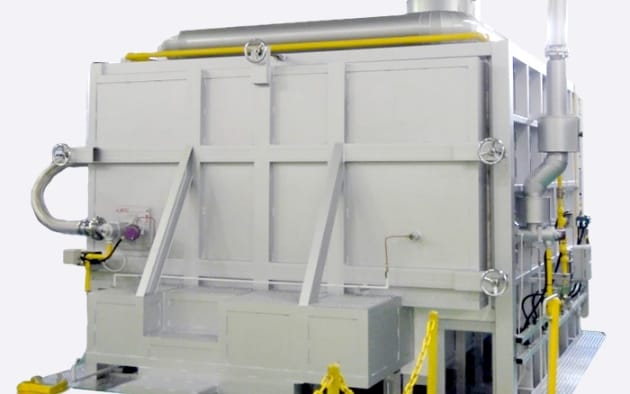
Gas-fired kiln lined with the developed heat insulator
Porous ceramics produced
by gelling and freezing method
Our porous ceramics, including high-temperature heat insulators, are produced using a special manufacturing method called the “gelatinization-freezing method.
Five features of porous ceramics
-
01. Not subject to RCF regulations
Porous ceramics are not subject to regulations because they do not use ceramic fibers such as Refractory Ceramic Fiber (RCF).
There is no scattering of fibers like fiber-based insulation materials, and it is resistant to abrasion. -
02. High porosity and high strength
Due to the densification of the skeleton, it is relatively strong despite its high porosity.
-
03. Air permeability and supportability
It has three-dimensional pores that penetrate each other, making it breathable and capable of supporting catalysts.
-
04. Easy processability
It can be machined even in the dry process and can be processed on site during construction.
-
05. Other Features
Thermal and chemical stability, sound absorption, etc.
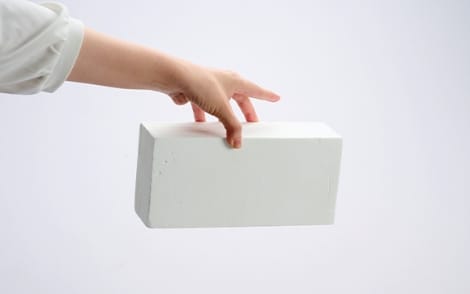
Only 680g for JIS standard shape (230x114x65mm), about 1/5 of the weight of conventional fire-resistant insulating bricks.
-
 Microstructure of porous ceramics
Microstructure of porous ceramics
-
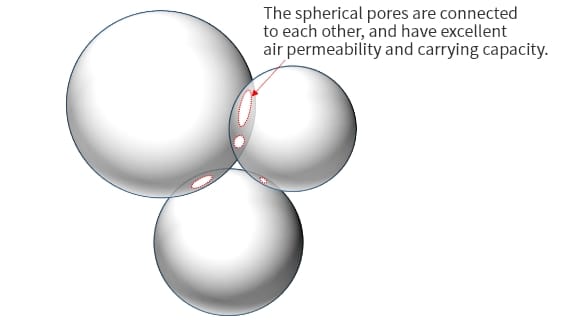 Structural model of porous ceramics
Structural model of porous ceramics
-
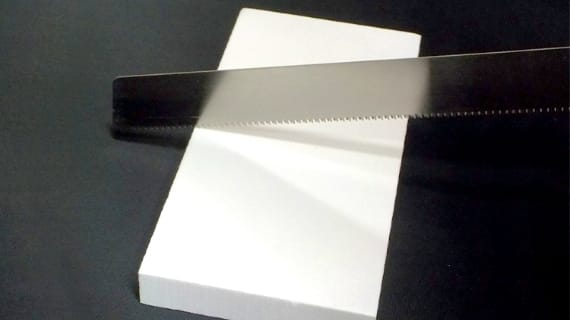 Ease of processing
Ease of processing
-
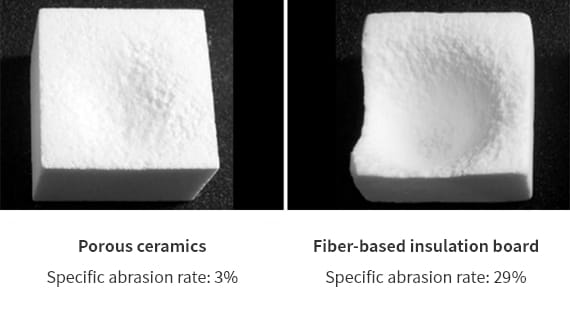 Appearance after sandblasting
Appearance after sandblasting
-
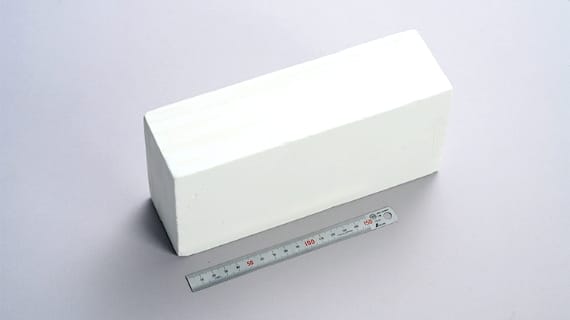 Size of porous ceramics
Size of porous ceramics
product
Developed Products
Non-oxide
ceramic sliding parts
Non-oxide ceramics such as SiC and B4C are used in various harsh environments as sliding components due to their excellent corrosion resistance, heat resistance, hardness and strength. We are developing ceramic valves for mixer faucets and mechanical seals for compressors and pumps.
Faucet Valves
Non-oxide ceramics, such as SiC and B4C, are used in a variety of harsh environments as sliding components due to their excellent corrosion resistance, heat resistance, hardness and strength. We are developing ceramic valves for mixer faucets and mechanical seals for compressors and pumps.
Mechanical seals
Mechanical seals are important parts for rotating equipment such as pumps and agitators, and are components that prevent fluid leakage from around a high-pressure, high-rotation shaft. We have developed mechanical seals with excellent wear resistance and sliding characteristics by designing and developing B4C ceramics and SiC base materials.
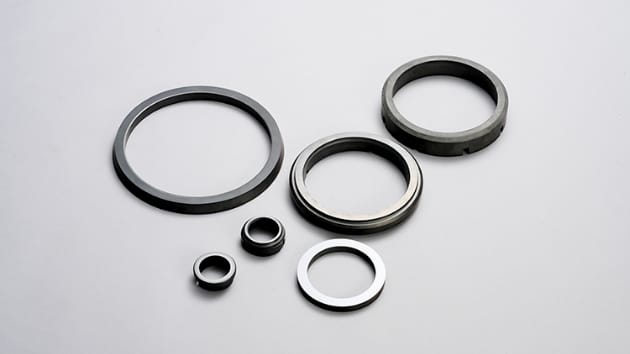
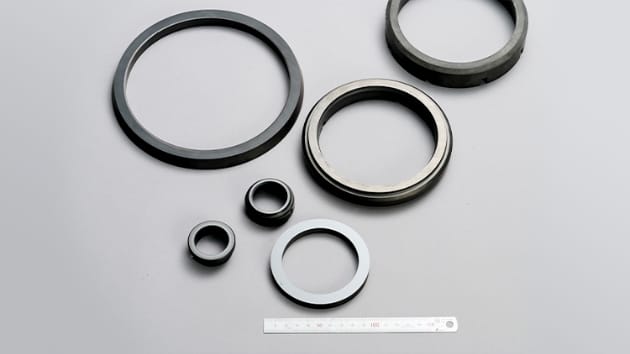
Non-oxide ceramics that can be processed by electrical discharge
Boron carbide (B4C) ceramics have excellent characteristics such as extremely high hardness and elasticity, second only to diamond, and extremely light weight as a structural material, with a specific gravity of about 1/3 that of iron. On the other hand, due to their high hardness, they cannot be easily cut or ground by machining, and it is difficult to create complex shapes. We have developed a B4C ceramic composite material with high conductivity by compositing B4C with dispersed conductive materials. Although our B4C has been manufactured by sintering at ambient pressure and near-net forming, its high electrical conductivity enables precision processing of complex shapes by electrical discharge machining while maintaining the excellent characteristics of B4C ceramics. It is expected to be applied to optical reflective mirrors, semiconductor carriers, nozzles, etc.
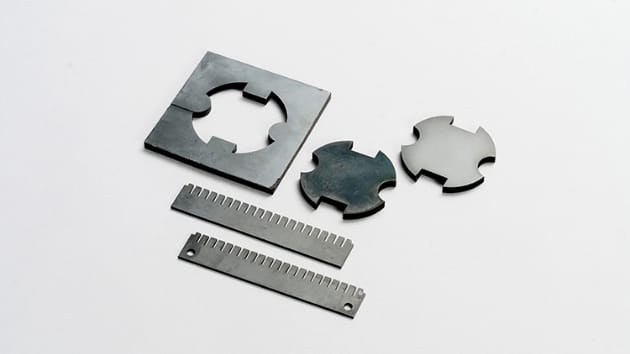
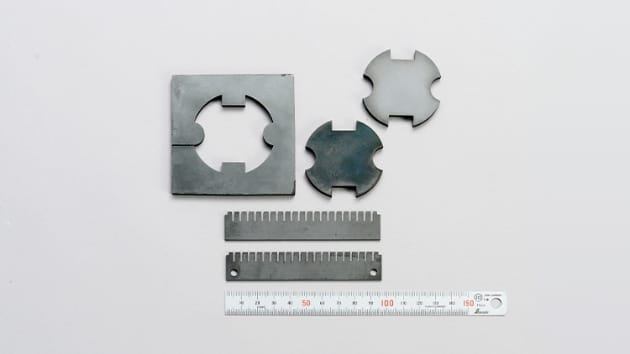
High performance chromium-free basic bricks for cement rotary kilns
In the past, refractory bricks used in cement production were mainly chromium magnesia bricks, but there was a risk that some of the chromium would turn into toxic substances, which posed an environmental problem.
In recent years, the use of waste and by-products as raw materials and fuel for cement has been increasing, and refractory bricks used in rotary kilns for cement are required to have better sulfur resistance and coating adhesion. We are continuously developing chromium-free basic bricks to meet the needs of our customers.
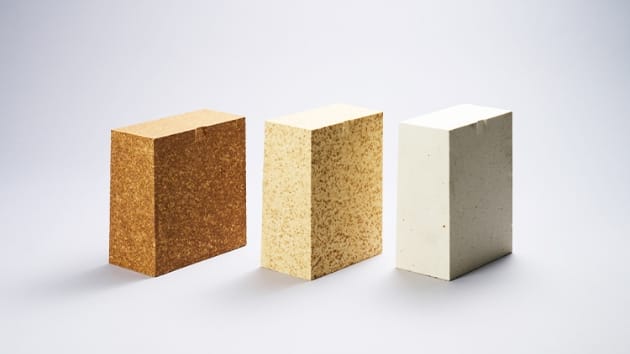
Kiln Furniture
The development and widespread use of functional ceramics, such as ceramic capacitors, ceramic sensors, and secondary battery electrodes, has been closely related to the rapid performance improvements in electronic devices such as PCs, smartphones, and electric vehicles in recent years.
The firing process is essential for the manufacture of these functional ceramics, and we develop and manufacture firing furnaces and ceramic tool materials for this purpose. In recent years, from the viewpoint of energy conservation, the firing of these functional ceramics is required to be done in a shorter time and to have a longer life.
We focus on the thermal shock resistance, alkali reaction resistance, and creep resistance of alumina and mullite ceramic tools for firing, and continuously improve the quality, develop materials, and make proposals to customers.
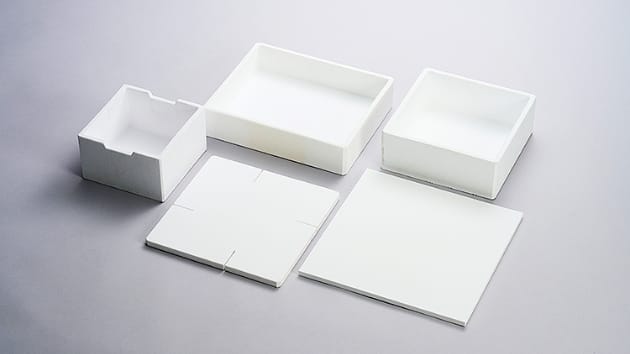
Gel Bond Castable
Refractories are mostly replaced by monolithic refractories, also known as refractory concrete, instead of fired bricks. This is due to the energy and cost advantages of monolithic refractories compared to fired bricks, which do not require the molding and firing processes in the manufacturing process, as well as the high adaptability and ease of construction to complex shapes.
However, since cement is mainly used as a substitute for the bond of fired bricks, it has the disadvantage of heat resistance and the necessity of drying to dehydrate the cement hydrate from the beginning of the creation of monolithic refractories.
We have developed a monolithic refractory material with high heat resistance and much shorter drying time by using gel bond instead of cement bond, which was used as a bond for conventional monolithic refractories.
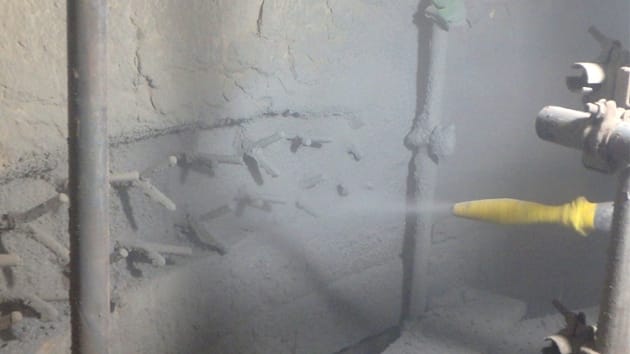
Feeder parts for glass melting furnaces
Feeder parts for glass melting furnaces are exposed to erosion by molten glass and thermal shock caused by sudden temperature changes, so high corrosion resistance and thermal shock resistance are required. We have developed high-purity alumina and alumina-zircon feeder parts of complex shapes with excellent thermal shock resistance and corrosion resistance.
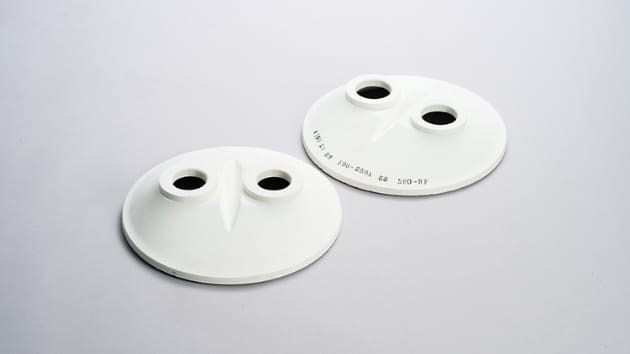
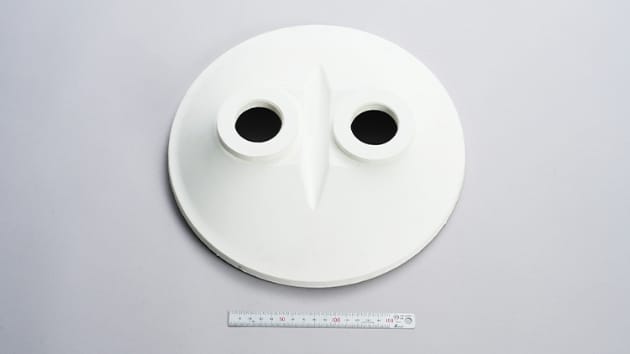
Refractories for waste treatment
One of the treatment facilities for industrial wastes is a rotary kiln type melting furnace, in which gasification and melting are carried out simultaneously in the furnace.
Refractories used in rotary kiln furnaces are required to have corrosion resistance against slag, stress relaxation against mechanical stress during rotation, and thermal shock resistance. We have developed the AREX-BF series of refractories for rotary kiln type melting furnaces.
